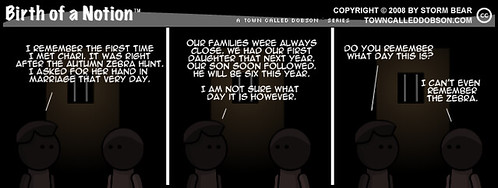 click to enlarge Subscribe to Town Called Dobson by Email! The trade of enslaved Africans in the Atlantic has its origins in the explorations of Portuguese mariners down the coast of West Africa in the 15th century. Before that, contact with African slave markets was made to ransom Portuguese that had been captured by the intense North African Barbary pirate attacks to the Portuguese ships and coastal villages, frequently leaving them depopulated. The first Europeans to use African slaves in the New World were the Spaniards who sought auxiliaries for their conquest expeditions and laborers on islands such as Cuba and Hispaniola, where the alarming decline in the native population had spurred the first royal laws protecting the native population (Laws of Burgos, 1512-1513). The first African slaves arrived in Hispaniola in 1501. After Portugal had succeeded in establishing sugar plantations (engenhos) in northern Brazil ca. 1545, Portuguese merchants on the West African coast began to supply enslaved Africans to the sugar planters there. While at first these planters relied almost exclusively on the native Tupani for slave labor, a titanic shift toward Africans took place after 1570 following a series of epidemics which decimated the already destabilized Tupani communities. By 1630, Africans had replaced the Tupani as the largest contingent of labor on Brazilian sugar plantations, heralding equally the final collapse of the European medieval household tradition of slavery, the rise of Brazil as the largest single destination for enslaved Africans and sugar as the reason that roughly 84% of these Africans were shipped to the New World. Merchants from various European nations were later involved in the Atlantic Slave trade: Portugal, Spain, France, England, Scotland, Brandenburg-Prussia, Denmark, Holland. As Britain rose in naval power and settled continental north America and some islands of the West Indies, they became the leading slave traders. At one stage the trade was the monopoly of the Royal Africa Company, operating out of London, but following the loss of the company's monopoly in 1689, Bristol and Liverpool merchants became increasingly involved in the trade. By the late 17th century, one out of every four ships that left Liverpool harbour was a slave trading ship. Other British cities also profited from the slave trade. Birmingham, the largest gun producing town in Britain at the time, supplied guns to be traded for slaves. 75% of all sugar produced in the plantations came to London to supply the highly lucrative coffee houses there. In general, early Christians, such as Paul, St. Augustine, or St. Thomas Aquinas did not oppose slavery. Pope Nicholas V even encouraged enslaving non-Christian Africans in his Papal Bull Romanus Pontifex of 1454. Since then other popes stated that slavery was against Christian teachings, as is now generally held. Even earlier, in 1435, Pope Eugene IV condemned the enslavement of the inhabitants of the Canary Islands. A list of papal statements against slavery (and also claims that the popes nonetheless owned and bought slaves) is found in the discussion Christianity and Slavery. Most Christian sects found some way to soothe the consciences of their slave-owning members. One notable exception was the Society of Friends (Quakers), who advocated the abolition of slavery from earliest times. The first slaves to arrive as part of a labor force appeared in 1502 on the island of Hispaniola (now Haiti and the Dominican Republic). Cuba received its first four slaves in 1513. Slave exports to Honduras and Guatemala started in 1526. The first African slaves to reach what would become the US arrived in January of 1526 as part of a Spanish attempt at colonizing South Carolina near Jamestown. By November the 300 Spanish colonist were reduced to a mere 100 accompanied by 70 of their original 100 slaves. The slaves revolted and joined a nearby native population while the Spanish abandoned the colony altogether. Colombia received its first slaves in 1533. El Salvador, Costa Rica and Florida began their stint in the slave trade in 1541, 1563 and 1581 respectively. The 17th century saw an increase in shipments with slaves arriving in the English colony of Jamestown, Virginia in 1619. Irish immigrants brought slaves to Montserrat in 1651. And in 1655, slaves arrive in Belize. Disclaimer:
|
Wednesday, March 26, 2008
Black History: Sailing to the New World
Posted by
Storm Bear
at
6:13 AM
![]()
Labels: Africa, cartoons, christianity, comics, middle passage, quakers, slavery, webcomics
Subscribe to:
Post Comments (Atom)








0 comments:
Post a Comment